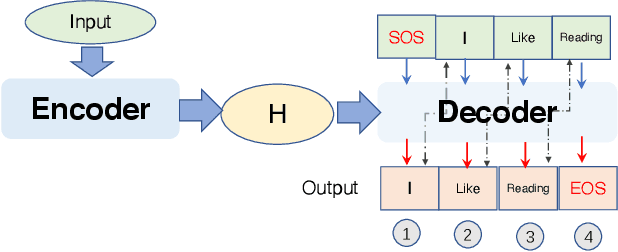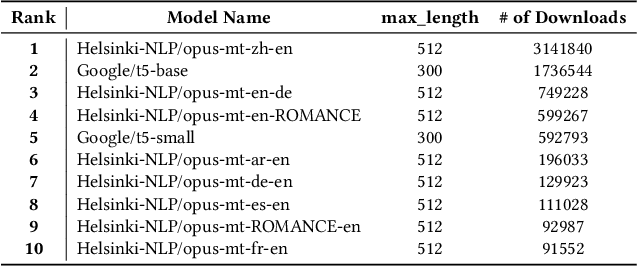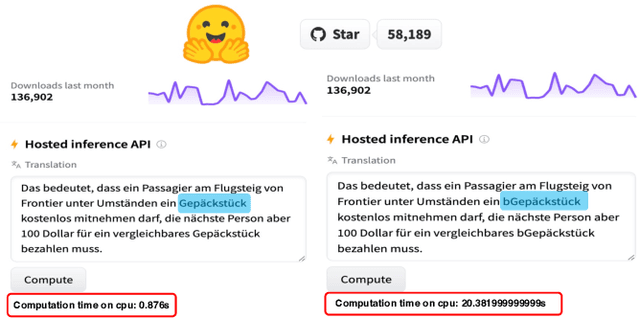NMTSloth: Understanding and Testing Efficiency Degradation of Neural Machine Translation Systems
Paper and Code
Oct 07, 2022



Neural Machine Translation (NMT) systems have received much recent attention due to their human-level accuracy. While existing works mostly focus on either improving accuracy or testing accuracy robustness, the computation efficiency of NMT systems, which is of paramount importance due to often vast translation demands and real-time requirements, has surprisingly received little attention. In this paper, we make the first attempt to understand and test potential computation efficiency robustness in state-of-the-art NMT systems. By analyzing the working mechanism and implementation of 1455 public-accessible NMT systems, we observe a fundamental property in NMT systems that could be manipulated in an adversarial manner to reduce computation efficiency significantly. Our key motivation is to generate test inputs that could sufficiently delay the generation of EOS such that NMT systems would have to go through enough iterations to satisfy the pre-configured threshold. We present NMTSloth, which develops a gradient-guided technique that searches for a minimal and unnoticeable perturbation at character-level, token-level, and structure-level, which sufficiently delays the appearance of EOS and forces these inputs to reach the naturally-unreachable threshold. To demonstrate the effectiveness of NMTSloth, we conduct a systematic evaluation on three public-available NMT systems: Google T5, AllenAI WMT14, and Helsinki-NLP translators. Experimental results show that NMTSloth can increase NMT systems' response latency and energy consumption by 85% to 3153% and 86% to 3052%, respectively, by perturbing just one character or token in the input sentence. Our case study shows that inputs generated by NMTSloth significantly affect the battery power in real-world mobile devices (i.e., drain more than 30 times battery power than normal inputs).
 Add to Chrome
Add to Chrome Add to Firefox
Add to Firefox Add to Edge
Add to Edge